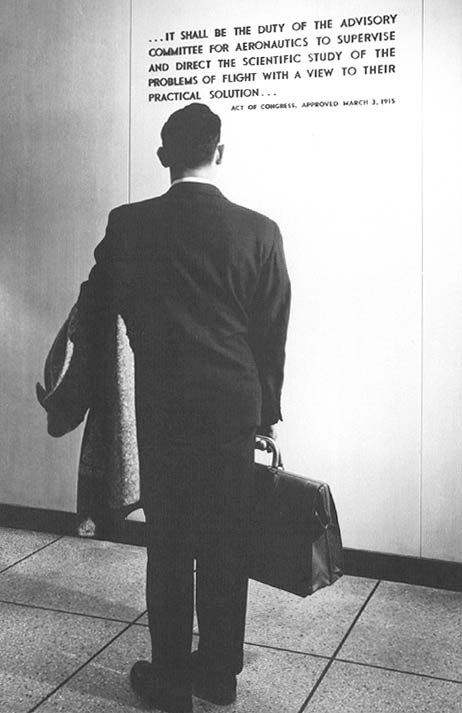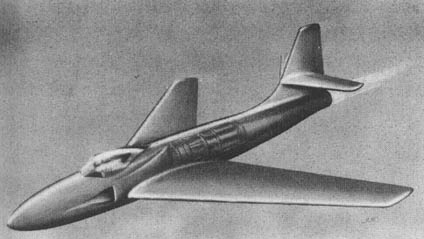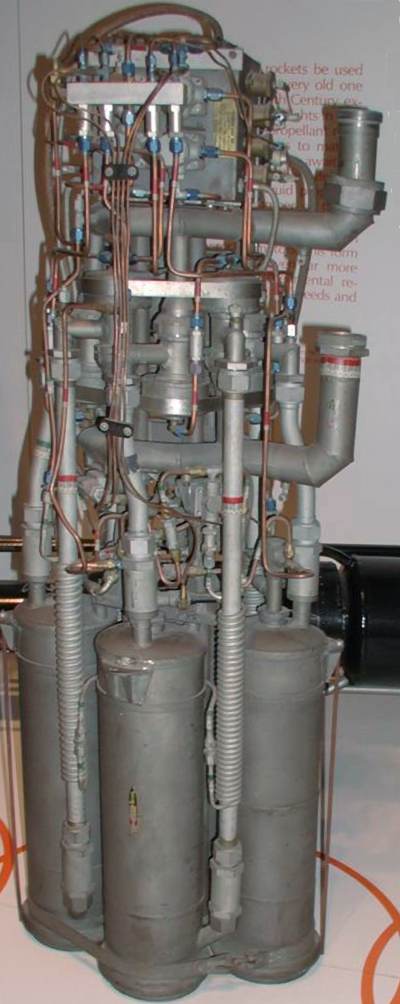|
NACA
The National Advisory Committee for Aeronautics (NACA) was a United States federal agency that was founded on March 3, 1915, to undertake, promote, and institutionalize aeronautical research. On October 1, 1958, the agency was dissolved and its assets and personnel were transferred to the newly created National Aeronautics and Space Administration (NASA). NACA is an initialism, pronounced as individual letters rather than as a whole word, as was NASA during the early years after being established. Among other advancements, NACA research and development produced the NACA duct, a type of air intake used in modern automotive applications, the NACA cowling, and several series of NACA airfoils, which are still used in aircraft manufacturing. During World War II, NACA was described as "The Force Behind Our Air Supremacy" due to its key role in producing working superchargers for high altitude bombers, and for producing the laminar wing profiles for the North American P-51 Mustan ... [...More Info...] [...Related Items...] OR: [Wikipedia] [Google] [Baidu] |
NACA Airfoil
The NACA airfoil series is a set of standardized airfoil shapes developed by this agency, which became widely used in the design of aircraft wings. Origins NACA initially developed the numbered airfoil system which was further refined by the United States Air Force at Langley Research Center. According to the NASA website: Four-digit series The NACA four-digit wing sections define the profile by: # First digit describing maximum Camber (aerodynamics), camber as percentage of the Chord (aircraft), chord. # Second digit describing the distance of maximum camber from the airfoil leading edge in tenths of the chord. # Last two digits describing maximum thickness of the airfoil as percent of the chord. For example, the NACA 2412 airfoil has a maximum camber of 2% located 40% (0.4 chords) from the leading edge with a maximum thickness of 12% of the chord. The NACA 0015 airfoil is symmetrical, the 00 indicating that it has no camber. The 15 indicates that the airfoil has a 15% thick ... [...More Info...] [...Related Items...] OR: [Wikipedia] [Google] [Baidu] |
NACA Duct
A NACA duct, also sometimes called a NACA scoop or NACA inlet, is a common form of low- drag air inlet design, originally developed by the U.S. National Advisory Committee for Aeronautics (NACA), the precursor to NASA, in 1945. Design Prior submerged inlet experiments showed poor pressure recovery due to the slow-moving boundary layer entering the inlet. The NACA design is believed to work because the combination of the gentle ramp angle and the curvature profile of the walls creates counter-rotating vortices which deflect the boundary layer away from the inlet and draws in the faster moving air, while avoiding the form drag and flow separation that can occur with protruding scoop designs. Aircraft applications When properly implemented, a NACA duct allows air to flow into an internal duct, often for cooling purposes, with a minimal disturbance to the flow. The design was originally called a submerged inlet, since it consists of a shallow ramp with curved walls recessed in ... [...More Info...] [...Related Items...] OR: [Wikipedia] [Google] [Baidu] |
NACA Cowling
The NACA cowling is a type of aerodynamic Aircraft fairing, fairing used to streamliner, streamline radial engines installed on airplanes. It was developed by Fred Weick of the National Advisory Committee for Aeronautics (NACA) in 1927. It was a major advancement in aerodynamic drag reduction, and paid for its development and installation costs many times over due to the gains in fuel efficiency that it enabled. NACA won the 1929 Collier Trophy for its development. History and design The NACA cowling enhanced speed through drag reduction while improving engine cooling. The cowling consists of a symmetric, circular airfoil that is wrapped around the engine. In a normal planar airfoil, like a wing, the difference in airspeeds, and their associated changes in pressure, on the top and bottom surfaces, enhances lift. In the case of the NACA cowl, the ring-shaped airfoil is positioned so this lift effect is forward. This thrust does not fully counter the drag of the cowl but greatly ... [...More Info...] [...Related Items...] OR: [Wikipedia] [Google] [Baidu] |
Bell X-1
The Bell X-1 (Bell Model 44) is a rocket engine–powered aircraft, designated originally as the XS-1, and was a joint National Advisory Committee for Aeronautics– U.S. Army Air Forces– U.S. Air Force supersonic research project built by Bell Aircraft. Conceived during 1944 and designed and built in 1945, it achieved a speed of nearly in 1948. A derivative of this same design, the #X-1A, Bell X-1A, having greater fuel capacity and hence longer rocket burning time, exceeded in 1954. The X-1 aircraft #46-062, nicknamed ''Glamorous Glennis'' and flown by Chuck Yeager, was the first piloted airplane to exceed the speed of sound in level flight and was the first of the X-plane (aircraft), X-planes, a series of American experimental rocket planes (and non-rocket planes) designed for testing new technologies. Design and development Parallel development In 1942, the United Kingdom's Ministry of Aviation began a top secret project with Miles Aircraft to develop the world's first ... [...More Info...] [...Related Items...] OR: [Wikipedia] [Google] [Baidu] |
NASA
The National Aeronautics and Space Administration (NASA ) is an independent agencies of the United States government, independent agency of the federal government of the United States, US federal government responsible for the United States's civil list of government space agencies, space program, aeronautics research and outer space, space research. National Aeronautics and Space Act, Established in 1958, it succeeded the National Advisory Committee for Aeronautics (NACA) to give the American space development effort a distinct civilian orientation, emphasizing peaceful applications in space science. It has since led most of America's space exploration programs, including Project Mercury, Project Gemini, the 1968–1972 Apollo program missions, the Skylab space station, and the Space Shuttle. Currently, NASA supports the International Space Station (ISS) along with the Commercial Crew Program and oversees the development of the Orion (spacecraft), Orion spacecraft and the Sp ... [...More Info...] [...Related Items...] OR: [Wikipedia] [Google] [Baidu] |
Area Rule
The Whitcomb area rule, named after NACA engineer Richard Whitcomb and also called the transonic area rule, is a design procedure used to reduce an aircraft's drag at transonic speeds which occur between about Mach 0.75 and 1.2. For supersonic speeds a different procedure called the supersonic area rule, developed by NACA aerodynamicist Robert Jones, is used. Transonic is one of the most important speed ranges for commercial and military fixed-wing aircraft today, with transonic acceleration an important performance requirement for combat aircraft and which is improved by reductions in transonic drag. Description At high-subsonic flight speeds, the local speed of the airflow can reach the speed of sound where the flow accelerates around the aircraft body and wings. The speed at which this development occurs varies from aircraft to aircraft and is known as the critical Mach number. The resulting shock waves formed at these zones of sonic flow cause a sudden increase in dr ... [...More Info...] [...Related Items...] OR: [Wikipedia] [Google] [Baidu] |
North American P-51 Mustang
The North American Aviation P-51 Mustang is an American long-range, single-seat fighter and fighter-bomber used during World War II and the Korean War, among other conflicts. The Mustang was designed in 1940 by a team headed by James H. Kindelberger of North American Aviation (NAA) in response to a requirement of the British Purchasing Commission. The commission approached NAA to build Curtiss P-40 fighters under license for the Royal Air Force (RAF). Rather than build an old design from another company, NAA proposed the design and production of a more modern fighter. The prototype NA-73X airframe was completed on 9 September 1940, 102 days after contract signing, achieving its first flight on 26 October. The Mustang was designed to use the Allison V-1710 engine without an export-sensitive turbosupercharger or a multi-stage supercharger, resulting in limited high-altitude performance. The aircraft was first flown operationally and very successfully by the RAF and as a t ... [...More Info...] [...Related Items...] OR: [Wikipedia] [Google] [Baidu] |
Wright Brothers
The Wright brothers, Orville Wright (August 19, 1871 – January 30, 1948) and Wilbur Wright (April 16, 1867 – May 30, 1912), were American aviation List of aviation pioneers, pioneers generally credited with inventing, building, and flying the world's first successful airplane. They made the first controlled, sustained flight of an engine-powered, Aircraft#Heavier-than-air – aerodynes, heavier-than-air aircraft with the ''Wright Flyer'' on December 17, 1903, four miles (6 km) south of Kitty Hawk, North Carolina, at what is now known as Kill Devil Hills, North Carolina, Kill Devil Hills. In 1904 the Wright brothers developed the ''Wright Flyer II'', which made longer-duration flights including the first circle, followed in 1905 by the first truly practical fixed-wing aircraft, the ''Wright Flyer III''. The brothers' breakthrough invention was their creation of a Flight dynamics (aircraft), three-axis control system, which enabled the pilot to steer the aircraft effec ... [...More Info...] [...Related Items...] OR: [Wikipedia] [Google] [Baidu] |
Carnegie Institution Of Washington
The Carnegie Institution for Science, also known as Carnegie Science and the Carnegie Institution of Washington, is an organization established to fund and perform scientific research in the United States. This institution is headquartered in Washington, D.C. , the Institution's endowment was valued at $926.9 million. In 2018, the expenses for scientific programs and administration were $96.6 million. American astrophysicist John Mulchaey is the current president of the institution. Name More than 20 independent organizations were established through the philanthropy of Andrew Carnegie and feature his surname. In 2024, the "Carnegie Institution for Science" officially adopted the name "Carnegie Science", a name which has been used informally since 2007 when they first changed the name from "Carnegie Institution of Washington" to "Carnegie Institution for Science". History It is proposed to found in the city of Washington, an institution which ... shall in the broad ... [...More Info...] [...Related Items...] OR: [Wikipedia] [Google] [Baidu] |
Charles D
Charles is a masculine given name predominantly found in English and French speaking countries. It is from the French form ''Charles'' of the Proto-Germanic name (in runic alphabet) or ''*karilaz'' (in Latin alphabet), whose meaning was "free man". The Old English descendant of this word was '' Ċearl'' or ''Ċeorl'', as the name of King Cearl of Mercia, that disappeared after the Norman conquest of England. The name was notably borne by Charlemagne (Charles the Great), and was at the time Latinized as ''Karolus'' (as in ''Vita Karoli Magni''), later also as '' Carolus''. Etymology The name's etymology is a Common Germanic noun ''*karilaz'' meaning "free man", which survives in English as churl (James (wikt:Appendix:Proto-Indo-European/ǵerh₂-">ĝer-, where the ĝ is a palatal consonant, meaning "to rub; to be old; grain." An old man has been worn away and is now grey with age. In some Slavic languages, the name ''Drago (given name), Drago'' (and variants: ''Dragom ... [...More Info...] [...Related Items...] OR: [Wikipedia] [Google] [Baidu] |
Smithsonian Institution
The Smithsonian Institution ( ), or simply the Smithsonian, is a group of museums, Education center, education and Research institute, research centers, created by the Federal government of the United States, U.S. government "for the increase and diffusion of knowledge". Founded on August 10, 1846, it operates as a trust instrumentality and is not formally a part of any of the Federal government of the United States#branches, three branches of the federal government. The institution is named after its founding donor, British scientist James Smithson. It was originally organized as the United States National Museum, but that name ceased to exist administratively in 1967. The Smithsonian Institution has historical holdings of over 157 million items, 21 museums, 21 libraries, 14 education and research centers, a zoo, and historical and architectural landmarks, mostly located in Washington, D.C. Additional facilities are located in Maryland, New York (state), New York, and Virg ... [...More Info...] [...Related Items...] OR: [Wikipedia] [Google] [Baidu] |





